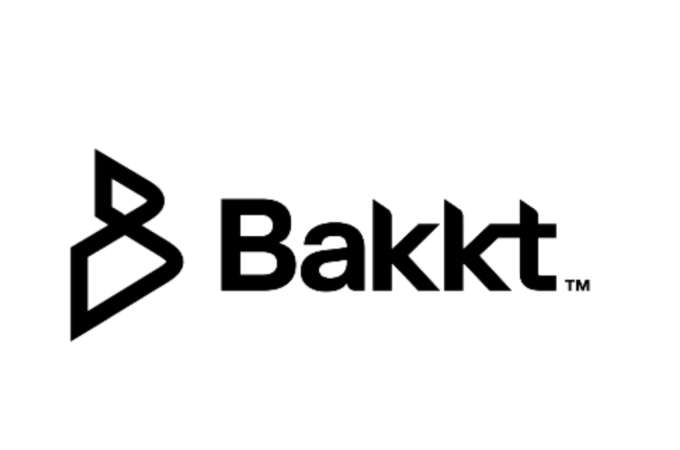
VCs should give Latin America another look
By Francisco Coronel for VentureBeat
Latin American startups are moving into the spotlight, and in the last six months, there have been big funding stories in the region, including Brazilian fintech startup Nubank, which raised $50 million, and on-demand food delivery service iFood, which picked up $30 million. Additionally, Mexican grocery shopping service Cornershop received $6.7 million in Series A funding, and the Argentinean-born Satellogic has accumulated a total of $30 million in multiple rounds.
According to LAVCA, venture investments in the region continue to climb, with VC transactions up 46 percent year-over-year and the equivalent of $218 million deployed across 104 transactions in the first half of 2016.
Yet despite these sizeable achievements, there are still many myths about the startup landscape in Latin America that continue to spawn hesitation among potential investors and foreign companies seeking expansion into the area. Here are some of the most common misperceptions about the Latin American startup scene and a look at some of the attractive opportunities developing in the region.
Myth 1: The startup community is too small
Latin America stands out when it comes to governmental willingness to develop cultural and public initiatives for startup programs. The stereotypical aversion to taking risk is now being outweighed by a positive attitude towards startup initiatives, and this is undoubtedly pushing the Latin American startup ecosystem forward.
A recent report from Gust and Fundacity, which provides an exclusive look at the 62 accelerator programs in Latin American countries, uncovered a total $31,563,841 investment into 1,333 startups in the region in 2015. One of the largest accelerator programs in the region, Start-Up Chile, has managed to help over 1,200 startups and 3,000 entrepreneurs, with the most successful projects raising over $135 million. Start-Up Chile is one of the top accelerator programs, with over $7 million in capital investments. And my firm, NXTP Labs, which has locations throughout Latin America and more than 174 companies in its portfolio, invested $6.5 million in the region’s startups last year.
Reports also show there are now over 141 coworking spaces in Latin America, and there’s no shortage of resources such as Endeavor and Red Innova that are linking the Latin American entrepreneurial ecosystems and boosting entrepreneurial spirits.
Myth 2: Brazil is the only country worthy of investment
The entrepreneurial culture in Brazil is arguably ranked among the highest in Latin America, and, more often than not, Brazilian startups have easier access to funding opportunities than many other countries in the region. As a result, those interested in investing in the region will have better luck if they look beyond Brazil to discover under-funded startups working on innovative solutions to the world’s problems.
If you want to study the entrepreneurial landscape of the region, a good starting point is Chile. The country out-performs many of the other countries in Latin America when it comes to digital entrepreneurship. Chile has also garnered recognition as a global tech hub thanks to its government-funded startup incubator, Start-Up Chile, mentioned above.
Uruguay, too, has developed an entrepreneurial environment that welcomes foreign investment. The country is stable when it comes to legal policies, andUruguay is well known for its progressive principles in areas such as gay rights and marijuana consumption. This has helped entrepreneurs in the country develop products adapted to both emerging and developed markets. It may be one of South America’s smallest countries, but Uruguay has also gained global recognition for its software industry.
Mexico is another Latin American country that has profoundly welcomed venture capital investments, with its activation of more than 20 VC funds. The impressive number of coworking spaces tailored to every niche imaginable has also made it easy for entrepreneurs grow their ventures.
Nowadays it’s also no exaggeration to say that “all eyes are on Argentina.” The new administration, led by Mauricio Macri, is setting up a series of structural changes to facilitate new company creation and a package of laws to foster entrepreneurship. There are also plans for the creation of 10 new funds to provide entrepreneurs access to capital (three will receive $30 million each by year end), and legislation to allow public crowdfunding. Similar legislative projects to encourage new company creation are also underway in Mexico and Brazil.
Although the market itself is not as big in Argentina, the global mindset among Argentinian entrepreneurs is what makes them stand out — especially when compared to countries such as Brazil or Mexico, where entrepreneurs tend to concentrate on servicing their own enormous markets.
Another fact that confirms this strength of the Argentinian entrepreneurial environment is that four out of Latin America’s six “unicorns” emerged from the country, including Mercado Libre, Globant, OLX, and Despegar.com.
As Lino Barañao, Argentina’s Minister for Science, Technology, and Innovation, recently declared, the historically dysfunctional economy of that country — perversely — has almost been beneficial for startups. Necessarily financially-savvy Argentines have been forced “to find ways to dodge the rules,” says Barañao. “In many ways that is negative, but it can be good for innovation.”
Myth 3: Latin America is just a land of copycats
An idea alone is not the key to success — what matters is execution. Search may have existed before Google, and social networking may have existed before Facebook, but it’s the execution that catapulted these companies to success.
Unfortunately, the risk-averse nature of investors in Latin America may explain why historically so many have felt more confident investing in ideas that mimic startup successes in the United States. But the times are changing, and startups in Latin America are adapting global ideas to serve their local markets. As a result, these companies are ending up with very different business models, notes Nicolas Szekasy, Cofounder and Managing Partner at Kaszek Ventures.
“Copycats are fewer and fewer,” says Ariel Arrieta, Founding Partner at NXTP Labs. “Latin American entrepreneurs know that from day one (and even day zero) they are competing globally, and so they concentrate primarily on leading the region, at least initially. Companies such as Satellogic and iBillionaire are evidence of a moment where research and development have matured to such an extent that it is no longer strange to hear ‘the next Facebook’ could come from Latin America.”
The reality, too, is that many successful American or European business models have not yet reached full implementation in Latin America, and therefore, many opportunities still exist for Latin American startups to pursue. Call them “copycats” or not, but many Latin American startups are perfecting these existing models for local markets and, many times, implementing the services better.
In this case, the “copycat” approach exposes one of its many advantages — having a potential exit strategy already set. Latin American startups are no stranger to the idea that, with the right market conditions, they can become the Latin American equivalent of a successful business model from the United States or Europe. If they can succeed to the point of approaching a global industry leader for acquisition, many of these global companies will seriously consider an acquisition as a way to enter new markets.
Ultimately, ideas can spread faster than companies, and millions of ideas may exist, but what matters most is the execution of these ideas.
Myth 4: The political and business environments are unpredictable
Although overall economic growth in Latin America has been low to moderate, it is important to note that this growth has been relatively stable. The costs of starting and running a business may be on the rise in regions of the world such as the United States and Europe; however, setting up a business is still relatively cheap in many of the startup hubs across Latin America. State governments in Argentina, Chile, Colombia, and Peru, are forming new trade agreements that are lowering, and even eliminating, the restrictions across borders to facilitate international business activity.
The Institute for Economics and Peace recently released its Global Peace Index Rankings for 2016, and many Latin American countries ranked far higher than the United States in terms of peacefulness. Additionally, according to Quandl, a database of financial and economic data, and The World Bank in its surveys ofEstimated Political Stability by Country, Costa Rica scored higher in terms of stability than the United States, France, the United Kingdom, and Italy.
For more evidence, we can look to countries like Mexico, where GDP grew 2.4 percent a year from 2000 to 2015 and employment rates have exceeded those of the European Union. Costa Rica is another country only growing stronger. With its open economy, high-quality education, and highly-skilled workforce, the country has even been termed the “Silicon Valley of Latin America” due to its reputation for attracting technology investments. According to the World Bank’s World Development Indicators, Costa Rica is Latin America’s number one high-tech exporter and the fourth highest tech importer in the world, with the country’s foreign direct investment reaching more than $1.5 billion.
In Argentina, the new Macri administration argues that the country boasts “the perfect mix of a new political cycle with a pro-investment government, diverse opportunities, and a region where there is no major conflict.”
Developing an entrepreneurial ecosystem in a region that is traditionally risk-averse and tends to view failure as a negative hit on the path to success is no easy task. As with any emerging market, those looking in must understand that a variety of risks, as well as rewards, exist.
Not everyone is in a position to deal with the challenges that may arise, but we can be sure that there are now the proper tools and resources in place to help mitigate many of the long-standing misperceptions about the startup landscape in Latin America.
First appeared at VB





